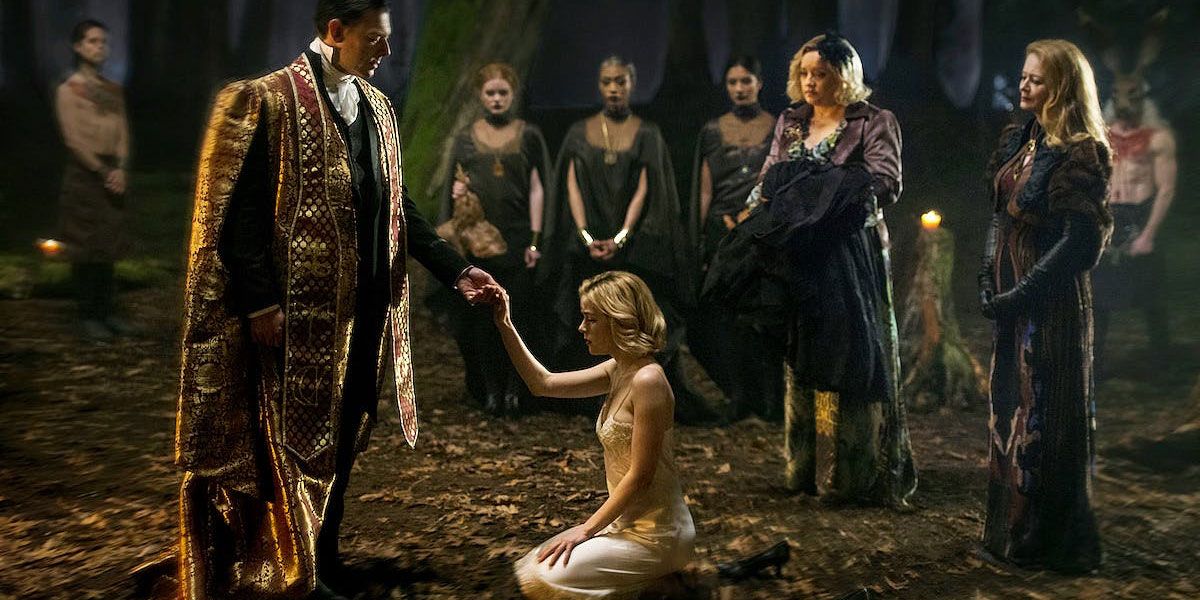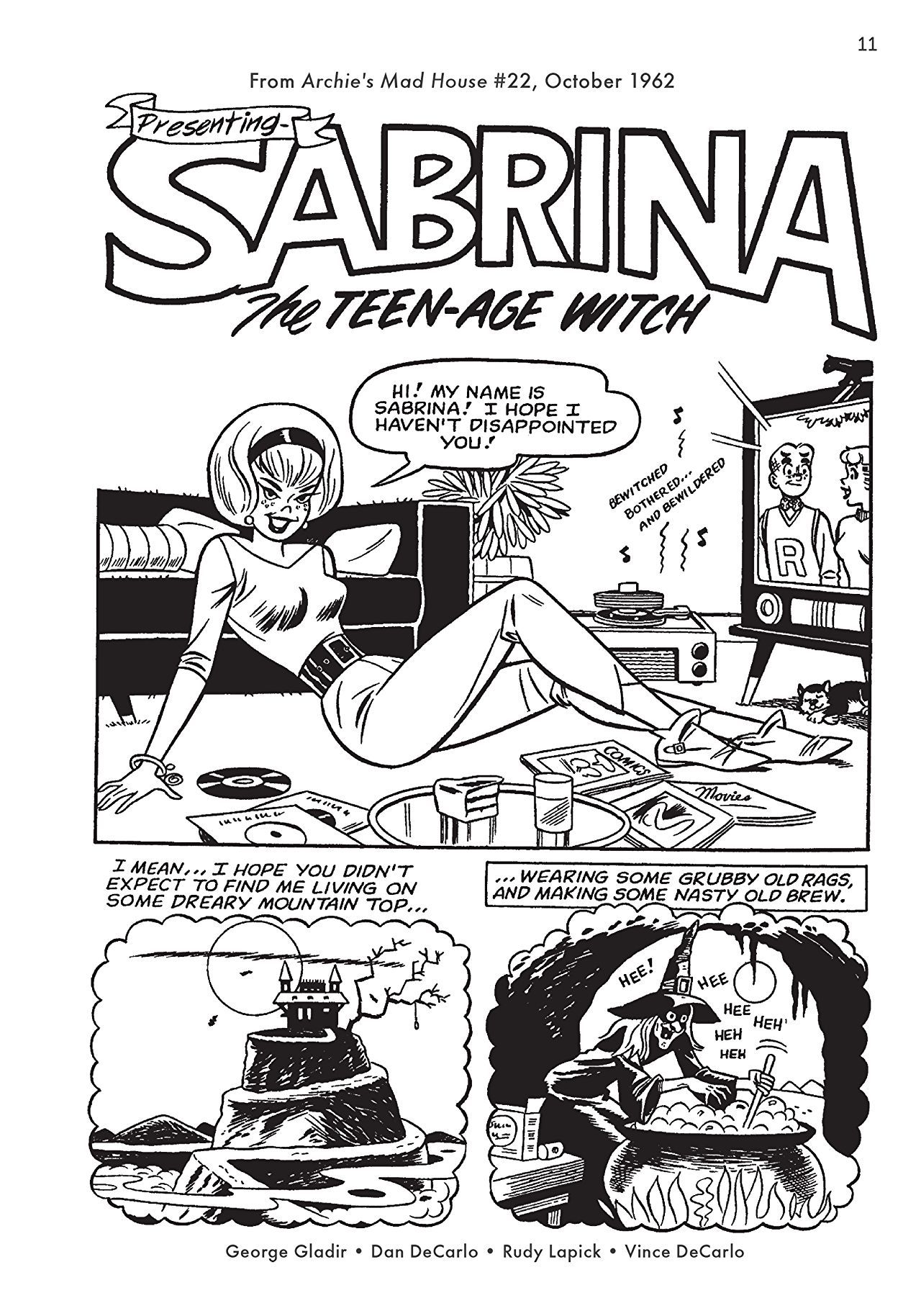Witch orgies, satanic goats, cannibalism and pledges of devotion to the Dark Lord. Netflix's The Chilling Adventures of Sabrina has come a long way from the animatronic cats and canned laughter of the '90s.
Sabrina the Teenage Witch was born in the early '60s as Archie Comics' Riverdale-adjacent mistress of magic, but today most know her almost exclusively from her first live-action incarnation, played by Melissa Joan Hart in the 1996 sitcom series. Affection for the show remains strong to this day -- enough to warrant the making of the upcoming Netflix reboot, premiering just in time for Halloween this year.
RELATED: REVIEW: For Chilling Adventures of Sabrina, Fearless Ambition Pays Off
Like any pop culture fixture, Sabrina Spellman's various lives -- across books, animation and live-action -- have been retooled over the decades as different creators rediscover and play with the quirks that make her unique in the crowded world of fictional witches.
Something (Not So) Wicked This Way Comes
We take the concept of witches and warlocks for granted these days, but in 1962, when Sabrina made her debut in Archie's Mad House #22 in (when else?) October, she was something special. Not that her creators, writer George Gladir and artist Dan DeCarlo, were aware of this at the time. "I think we both envisioned it as a one-shot and were surprised when fans asked for more," said Gladir in a 2007 interview with Oddball Comics. Ironically, when the '90s series was released, many pointed to Bewitched as the proto-Sabrina, but she actually predates Samantha Stephens by a few years.
The closest actual precursors to the teenage witch were the likes of supernatural romance movies like 1942's I Married A Witch and 1958's Bell, Book and Candle. Stories like these cast 20th century witches -- who were often survivors of the infamous witch trials of the 1600s -- as adult femme fatales armed with love potions and devilish charms that could lead men to ruin.
Against them, Sabrina stood out for her age and lightheartedness. She went to high school, used her spells to pull pranks, upgraded her flying broomstick to a vacuum cleaner and knew all the hip and happenin' slang of the time. She was young, cool and mischievous. A far cry from the green-skinned, hook-nosed evil caricatures of the past, as she assures us in her introductory strip.
RELATED: Netflix’s Chilling Adventures of Sabrina Trailer Ratchets Up the Horror
A Witch in Time
From her groovy adventures in the '60s and '70s to her chilling ones in 2018, there are certain core elements of Sabrina that never change. The taboo progeny of a witch father and mortal mother, Sabrina Spellman is sent to live with her aunts, Hilda and Zelda, in Greendale (a neighboring town to Riverdale) to blend in with mortal society, all while hiding her magical identity.
Other recurring characters include her mortal love interest, Harvey Kinkle, and her familiar, Salem the Cat -- formerly a rogue warlock called Salem Saberhagen, imprisoned in a feline body as penance for a failed world domination plot. Initially, communication with familiars was limited to witches only through a kind of "animal speak." Later, Salem acquired the gift of the gab, and his sassy one-liners and wardrobe changes became one of the '90s series' biggest charms.
The early Archie Comics strips also gave Sabrina some odd restraints that haven't stuck around. As a witch, she couldn't cry, she always floated on water (a callback to how witches were "judged" in Salem) and she couldn't fall in love. Her powers of romantic persuasion were instead reserved for others, like an earth-bound Cupid. Not that she let this deficiency get in the way of her dating life.
Page 2: [valnet-url-page page=2 paginated=0 text='Sabrina Gets New Life After a Major Archie Comics Reboot']
Greendale Gets the Chills
From the late '90s on, Archie Comics put Sabrina through a cycle of constant reinvention that saw her appear in her own manga spinoff, magically gender-bend the entire town of Riverdale and nearly get assassinated by a dimension-displaced Sonic the Hedgehog in a bizarre crossover "Crisis" special.
Sadly, Sabrina the Teenage Witch didn't survive Archie Comics' "pilot season," a universe-wide reboot in 2015, but, after resurrecting Jughead Jones' dead dog in Afterlife With Archie, she lived to hex another day in Roberto Aguirre-Sarcasa and Robert Hack's The Chilling Adventures of Sabrina, which was later adopted into the Archie Horror imprint alongside a zombified Jughead and vamped-up Veronica Lodge.
"After Afterlife became what it became," Aguirre-Sarcasa writes in the back pages of Issue #1, "surprising all of us, Jon Goldwater [co-CEO of Archie Comics] and I started talking about a companion book, and immediately we zeroed-in on Sabrina. Rather than spin her out directly from the pages of Afterlife [...] we decided to start from scratch. With Sabrina as a baby girl. And set the series not just in a different 'universe' [...] but in a different time period, as well, the 1960s. To evoke those movies like The Little Girl Who Lived Down The Lane and Rosemary's Baby, which captured the tone of what we were hoping to achieve."
The time shift not only curtained off Sabrina's world from the rest of the Archieverse, but it returned the character to her roots. Retreading familiar ground also gave Aguirre-Sarcasa and Hack scope to make the all-new, all-creepy Greendale seem all the more uncanny. Casual mention of Zelda and Hilda dismembering corpses in the basement for dinner is offset by Sabrina fretting over how to magically engineer Harvey into noticing her at school.
RELATED: Riverdale EP Confirms It: Series Won’t Cross Over with Sabrina
New Coven, Old Faces
Sabrina's hybrid heritage has always made her the black sheep of the Spellman clan, which forms the basis of the drama in The Chilling Adventures comics, as she finds herself, like many teenagers, torn between family expectation and following her own heart. All the while, closed wounds from her father's messy past begin to reopen around her.
The first arc begins with Sabrina developing her powers at a young age and builds towards a satanic baptism she must take part in at the age of 16 to confirm her status as a witch. Failure to do so, she's told by her aunts, will result in the decay of her magic. This is one of the ways The Chilling Adventures manages to skillfully reconcile the disparate elements of the character's past -- weaving together comic book lore of her powers being with her since birth, with her discovering them at 16-years-old, an invention of the '90s TV show.
This is also evident in the inclusion -- and evolution -- of obscure characters, like Sabrina's English cousin, Ambrose Spellman, who has morphed from a flamboyant middle-aged man in the original strips and Sabrina's closeted teen confidante in the The Chilling Adventures comics to "witty, puckish and pansexual" in the Netflix adaptation.
Another resurrection from Sabrina's buried history comes in the form of Madam Satan, the malevolent spirit who possesses Sabrina's favorite Baxter High teacher, Mary Wardwell. The character originated in a 1930s Cecil B. DeMille movie before appearing as a supernatural temptress in 1941's Pep Comics, and eventually became Sabrina's magical mentor, encouraging her to use her powers for misdemeanors. Again, The Chilling Adventures borrows from all of this rich history to create a sultry and spooky villainess.
RELATED: Chilling Adventures of Sabrina Images Spotlight Show’s Characters
Sultry and spooky is a good summary for the tone of The Chilling Adventures as a whole, actually; unrequited teen romance on a background of bloodied covens dancing naked in the woods. There might not be any Britney Spears cameos, but the Sabrina you know and love is still in there. Just with added Devil worshipping.


